Buyer's Guide: The 10 Best Fuel-Efficient Tires and Low Rolling Resistance Tires

Prompted by a call for ever-improving fuel efficiency, today’s tires are made to be more fuel efficient than ever — and many major tire manufacturers are evolving their product lines to include special fuel-saving, eco-friendly tire options that are designed to last longer and perform better while saving fuel and reducing emissions in the process.
Whether by using a new tread pattern, some high-tech tweaks to the rubber compounding, or a combination of proprietary technologies, tire manufacturers are making tracks towards offering ever-smarter tires designed to save shoppers money and fuel. The options are nearly limitless — and below, we’ll highlight some of the latest offerings from the world of high-tech, fuel-efficient tires, also sometimes referred to as low rolling resistance tires.
Table of contents
- 1. Editor's Pick: Pirelli Scorpion Verde
- 2. Continental Crosscontact LX20 EcoPlus
- 3. Bridgestone Ecopia
- 4. Dunlop Enasave
- 5. Michelin Energy Saver A/S
- 6. Goodyear Assurance Fuel Max
- 7. Hankook Kinergy Eco
- 8. Firestone Champion Fuel Fighter
- 9. General Grabber HTS
- 10. Michelin Latitude X-Ice Xi2
- What Makes Fuel-Efficient Tires Different?
- Are Fuel-Efficient Tires Worth It?
- General Tips on Tires
1. Editor's Pick: Pirelli Scorpion Verde
From one of the best-known names in tires comes the Scorpion Verde line, designed to help drivers reduce their vehicle’s impact on the environment with no hit to performance or functionality. Using Pirelli’s Green Performance practices, this line of tires brings numerous fuel-saving and life-extending benefits to shoppers with design, engineering and technology deployed to help reduce fuel use and support a longer tire life. Scorpion Verde tires are manufactured using best practices for reduced environmental impact and a high degree of recyclability.
Key in the fuel-saving performance of these tires is a silica-enhanced rubber compound that enables the use of a low-resistance tread without sacrificing traction. The tread design promotes even wear and long life, while quickly evacuating water for consistent performance in most driving conditions. Sizes are available to cover a wide range of makes, models and applications, and owner reviews are typically positive.
Pros | Proven fuel-saving tech, environmentally conscious, long tire life contributes to lowered running costs |
Cons | Relatively pricey, may not be suitable for all applications |
Bottom Line | Our Editor's Pick for Best Fuel-Efficient Tire |
2. Continental Crosscontact LX20 EcoPlus
Created with a focus on helping drivers of SUVs, crossovers and light-duty trucks experience ecologically friendly performance, Continental’s LX20 EcoPlus tire line helps reduce environmental impact without sacrificing performance. Designed to perform well during highway and mild off-road driving, they intend to save fuel while maximizing grip and braking capability, on even wet or slippery surfaces.
Long wear and all-season traction are part of the package, and these tires have been designed to work well in light snow, too. Special additives in the rubber compound work with strategic reinforcements in the tire structure to generate top levels of traction and treadwear, and the center tread design contributes to a more positive steering feel that enhances driving pleasure. Ideal for the utility vehicle shopper after reduced fuel use and emissions, the Continental LX20 EcoPlus tire range is available for a wide range of makes and models.
Pros | Enhanced steering feel, good performance, even on wet or slippery surfaces, fuel saving technology and long life |
Cons | Not suitable for moderate to severe winter use, not suitable for moderate to severe off-road use |
3. Bridgestone Ecopia
Bridgestone’s Ecopia tire line combines the confidence of one of the world’s foremost tire brands with reduced environmental impact from an ecologically oriented All-Season Grand Touring tire designed for light vehicles. With many sizes available to cover coupes, sedans, small crossovers, and minivans, the Ecopia tires feature reduced rolling resistance for improved fuel economy and reduced vehicle emissions.
These unique tires eliminate the compromise between grip and fuel efficiency with specially developed NanoPro-Tech (Nanostructure-Oriented Properties Control Technology), which reduces rolling resistance and energy loss while maintaining traction and performance that drivers expect. Special compounds in the tire sidewall reduce tire weight to further increase efficiency, and a special polyester casing and belt-reinforced structure optimizes durability and ride comfort, too.
Pros | Maintains handling and grip, reduced fuel use and emissions, optimized ride comfort and durability |
Cons | Careful attention to tire pressure required to maintain long life |
4. Dunlop Enasave
Dunlop’s Enasave eco-friendly tire line was originally designed for factory installation on electric cars, and have now hit the market designed to combine high-performance environmental consciousness with a quiet ride and optimized year-round traction, even in light snow. The low-resistance tread compound is molded into a symmetrical pattern that enables a uniform footprint pressure on the road, promoting traction and reducing energy loss. Special provisions in the tread pattern, and the construction of the tread and shoulder blocks, simultaneously enhance wet-handling capabilities and reduce noise levels, too.
Pros | Good performance, fuel savings built right in, engineered for solid performance and a quiet ride |
Cons | Some owners report faster-than-expected wear |
5. Michelin Energy Saver A/S
Designed for hybrids and fuel-efficient passenger cars, Michelin’s Energy Saver A/S tires have been extensively engineered to help drivers realize the highest possible fuel economy from their high-efficiency vehicles, without discarding dry and wet traction and handling. These flagship tires represent the best of Michelin’s Green X technology, and enhance operational efficiency while reducing emissions and environmental impact.
Engineers specified a silica-based rubber compound that helps enhance fuel economy by keeping the tire cooler. The expertly calibrated tread design delivers predictable handling, compromise-free stopping performance and excellent resistance to hydroplaning. Special measures throughout the tire tread and inner construction fight off vibrations that contribute to a noisy ride, too. Expect fantastic performance, mileage and comfort from these high-end fuel-saving tires.
Pros | Leading technology, ideal for hybrid and high-efficiency vehicles, excellent performance and comfort |
Cons | Relatively pricey for some applications, some owners report faster-than-expected wear |
6. Goodyear Assurance Fuel Max
Combining the confidence of a long-time leader in tires with a complement of advanced fuel-saving implements, Assurance Fuel Max tires from Goodyear are available for coupes, vans, cars and crossovers. Affordable pricing combines with a low rolling resistance design that doesn’t compromise performance, and distinctive tread zones combine with reinforced shoulder blocks for a tire that’s durable, energy efficient, and long-lasting.
Aqua-channel grooves and a continuously notched center rib enhance wet-road handling and steering precision, and a special twin-belt inner structure is employed to boost ride quality. These tires are well reviewed, and work well as an affordable, all-around fuel-saving solution.
Pros | Affordable pricing, long lasting, good wet performance |
Cons | Not intended for winter use, some owners report higher-than-expected road noise |
7. Hankook Kinergy Eco
Hankook’s strong reputation for quality and performance combines with the brand’s take on an effective fuel-saving tire in the Kinergy Eco tire line. Ideal for use on sports and performance models, including sports sedans, coupes and convertibles, these high-performance summer tires are intended solely for use in performance applications, and not intended for use in near-freezing temperatures, or in snow.
Answering the call of enthusiast drivers after increased ecological performance, the Kinergy Eco tires utilize a silica-enhanced tread compound that reduces rolling resistance to save fuel and reduce emissions, while maintaining the grip and precision feel expected of a performance tire.
Pros | Solid performance, saves fuel, reduces emissions |
Cons | Intended for fair-weather use only |
8. Firestone Champion Fuel Fighter
Fuel savings are front and center with this popular and affordable passenger car tire from Firestone. An all-season tire intended for use on coupes, sedans, minivans and crossovers, the Firestone Champion Fuel Fighter tires feature a unique feature set that focuses on enhanced fuel efficiency, reduced emissions, and a comfortable ride.
Special design elements combine the effectiveness of a silica-based all-season compound with a symmetrical design that ensures even wear, easy rotatability, and a long service life. Interconnected water evacuation grooves keep hydroplaning to a minimum, and optimized biting edges work to provide improved traction on slippery or loose surfaces. Firestone’s Fuel Fighter technology is employed in full force, and sees materials, design, construction, and tread patterning all designed with a keen focus on fuel efficiency.
Pros | Strict focus on fuel savings, owners report enhanced ride comfort, affordable pricing |
Cons | Some owners report faster-than-expected wear, some owners wish for better wet traction as the tires age |
9. General Grabber HTS
These off-road oriented tires from General blend the proven performance of the Grabber tire line with special provisions to enhance highway manners, durability, and fuel efficiency. These specialized tires cater to drivers of trucks and 4x4 SUV models, as well as full-sized vans.
High-tensile steel belts make these tires strong and durable, even over challenging or rough surfaces and an internal cushioning system mitigates any compromise to ride quality. Engineers also specified the use of Stabilink connecting bars within the tires, which increase stability for enhanced performance and feedback in a variety of driving conditions. The grippy tread pattern works to bite effectively into loose or slippery surfaces, and the Eco-Ride tread improves fuel economy via a special tread pattern and compound combination.
This is a fantastic tire for the shopper after off-road capability, good all-around highway manners, and enhanced fuel efficiency from their 4x4.
Pros | Reputable off-road performance, good on-road manners, fuel saving technology built in |
Cons | Specifically intended for truck / SUV / 4x4 use |
10. Michelin Latitude X-Ice Xi2
An ideal solution for the shopper after a premier, full-function, fuel-saving winter tire, the Latitude X-Ice Xi2 tires from Michelin combine a plethora of winter performance elements with Michelin’s Green X technology for advanced fuel savings and environmental responsibility. Available on selected tire sizes within this winter tire range, the Green X designation represents an enhanced approach to sustainability and ecological performance.
The designation is determined by laboratory testing and assigned on a tire-by-tire, size-by-size basis to represent that the tire provides a high level of energy efficiency without compromise. Expect a dramatic improvement in traction during driving in challenging winter conditions or at low temperatures, as well as enhanced fuel economy and emissions performance. Owner reviews are extremely positive on this go-to range of fuel-saving winter tires.
Pros | Excellent wintertime performance, strong brand reputation and owner reviews, enhanced fuel savings |
Cons | Relatively pricey |
What Makes Fuel-Efficient Tires Different?
Fuel-saving tires come with varying combinations of features and factors that let them do their job — and there’s no solid definition that fits each and every one.
In general, fuel-efficient tires seek to reduce rolling resistance (that is, the energy required to make them turn), by using a stiffer, harder rubber compound. But harder rubber means less grip — so in most cases, that harder rubber compound is enhanced with a silica-based additive that increases traction (not rolling resistance) where the tire meets the road. The gist? Low rolling resistance tires typically use a harder, more fuel-efficient but less-grippy rubber compound, and compensate for the inherent loss of grip by way of a special additive in the rubber itself.
From that basis, the tire can be re-optimized: often with specially designed tread patterning, structural implements within the tire, and weight-saving measures that all contribute to further-reduced fuel usage. As this genre of tire focuses on environmental responsibility, they’re also typically manufactured in green facilities and designed to be longer-lasting and more recyclable, too.
Are Fuel-Efficient Tires Worth It?
By many accounts, the technology works — and in many cases, a minimal extra investment in a fuel-saving tire can translate into measurable fuel savings over the life of the tire. Don’t expect a huge savings or for the tires to (necessarily) pay for themselves, and remember that fuel economy changes are extremely difficult to measure due to hundreds of other factors that can play a role in the day-to-day fuel use of any given vehicle. Locale, driving style, elevation, climate, and many other factors all come into play, here. Still, drivers who consciously take steps to reduce their fuel usage will likely find the minimal extra cost of a set of fuel-saving tires to be a worthy addition to their arsenal.
General Tips on Tires
Don’t forget to check out the speed ratings and load ratings, matching them up against what you drive, and how you drive it. If you’re in any doubt about whether the tire you’re considering is appropriate for your vehicle, be sure to talk to an expert before you buy for maximum safety and peace of mind. Remember that installing inappropriate tires to a vehicle that’s heavier than the tires are designed for can be a safety hazard and will likely void the tire warranty.
The Right Tire for the Season: What tire is best for you? That depends on numerous factors, and there’s no such thing as the ‘best’ tire — only the tire that best suits your specific needs, driving habits, locale, climate, and budget. All-Season tires are the go-to for many drivers, though they’re not ideal for use in most winter climates. All-Weather tires are marketed as something of an all-season tire with added wintertime capability and are increasing in popularity. These are geared towards a shopper who will only run a single set of tires all year, though experienced drivers know that a Winter Tire is best for winter—and that an all-season tire is typically best for the other three seasons. Specialized or sports and performance models may benefit from running a summer/performance tire at all times, assuming the vehicle is stored for the winter months, and won’t be driven in the cold or snow. If in doubt, ask a tire expert for guidance. Remember that in most locales with anything more than very mild winter weather, a set of dedicated winter tires is best for use in the colder months.
A Very Important Fact: Your modern car, truck or crossover has a plethora of systems designed to help drivers maintain full control and confidence in all situations. With features like multi-channel ABS brakes, AWD, stability control, traction control, and torque vectoring, cars are working harder and smarter than ever to turn in improved handling and safety in all situations. Thing is, none of these systems can actually create traction, and they’re only as good as the tires mounted to them. A quality set of tires, matched to the season and climate in which the vehicle will be operated, gives these systems more traction to work with. Don’t sell yourself short: remember that using inappropriate tires for the weather, or low-quality tires in general, will severely limit the effectiveness of your vehicle’s assist systems.
Don’t Forget the Re-Torque: When making a seasonal tire swap at a local tire shop or at home in your driveway, remember to re-torque the wheel-nuts after the first 60 miles or so of driving, for maximum safety and peace of mind. When removing and reinstalling the tires and wheels, the wheel-nuts need to be removed and reinstalled, disturbing them. Sometimes, wheel-nuts can back off or loosen in the initial miles after they’re removed and reinstalled, which can lead to an unwanted vibration, wobble, or total wheel loss—which will result in damage and an accident. Thankfully, re-torquing wheel-nuts is easy and simple, and your installing tire shop usually does the work free of charge. It only takes a moment or two, and you don’t even have to pull your vehicle into the shop. Don’t skip this important step.
Make them Last: There are two secret weapons at your disposal for helping make that new set of tires last as long as possible. First? Inflation pressure. Tires can naturally lose air over time, which is why regular checking and adjusting of the tire pressure is a great idea. This should be done roughly once a month (the more the better), takes only a minute or two, and ensures your tires are at the correct inflation pressure at all times. Underinflated tires will negatively affect your vehicle’s safety, handling and fuel economy, and they’ll wear out faster too — which costs you money. Check the documentation that comes with your new tires for inflation instructions, as well as the best time to check inflation pressure—which is usually while the tires are cold, after the vehicle hasn’t been driven for a while.
The second way to ensure your tires last as long as possible? Confirm that your vehicle’s alignment is in good shape. If the tires you remove from your vehicle show signs of cupping, wear on the edges of the treads, or heavier wear on one side of the tread than the other, the likely cause is an alignment-related issue, which should be addressed before you install your new rubber. A car that’s out of alignment will suffer from degraded handling, poor fuel mileage, and often rapidly-accelerated tire wear. Thankfully, a professional can check and correct your vehicle’s alignment quickly if you have any concerns.
When to Switch: In general, it’s time to switch from your all-season or summer tires to your winter tires when temperatures stay consistently below about 44 degrees Fahrenheit during the day and night. In springtime, when temperatures stay above that point, it’s time to swap back to your non-winter tires. Remember that using winter tires in warmer conditions, or leaving them on all year round, can cause accelerated wear, increased fuel use, and other problems.
We are committed to finding, researching, and recommending the best products. We earn commissions from purchases you make using the retail links in our product reviews. Learn more about how this works.
Photo credit: Everyonephoto Studio / Shutterstock.com

Justin Pritchard, an award-winning automotive journalist based in Sudbury, Ontario, is known for his comprehensive automotive reviews and discoveries. As a presenter, photographer, videographer, and technical writer, Justin shares his insights weekly through various Canadian television programs, print, and online publications. In 2023, Justin celebrated a significant milestone, airing the 600th episode of his TV program, AutoPilot. Currently, he contributes to autoTRADER.ca, Sharp Magazine, and MoneySense Magazine. His work as a technical writer, videographer, presenter, and producer has been recognized with numerous awards, including the 2019 AJAC Video Journalism Award and the 2018 AJAC Journalist of the Year. Justin holds a Bachelor of Commerce (Hons) from Laurentian University, which he earned in 2005. His career in automotive journalism began that same year at Auto123.com. Since then, he has written one of the largest collections of used car buyer guides on the internet. His passion for photography, nurtured from a young age, is evident in his work, capturing the scenic beauty of Northern Ontario. Living in a region with a particularly harsh winter climate has made Justin an expert on winter driving, winter tires, and extreme-weather safety. Justin’s significant achievements include: 2019 AJAC Video Journalism Award (Winner) 2019 AJAC Road Safety Journalism Award (Runner-Up) 2019 AJAC Automotive Writing (vehicle review topics) (Winner) 2019 AJAC Automotive Writing (technical topics) (Winner) 2018 AJAC Journalist of the Year You can follow Justin’s work on Instagram @mr2pritch and YouTube @JustinPritchard.
More by Justin Pritchard



























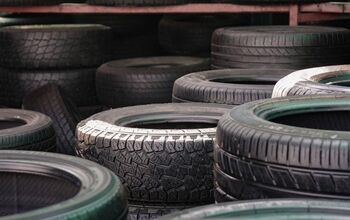





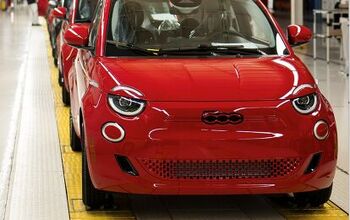

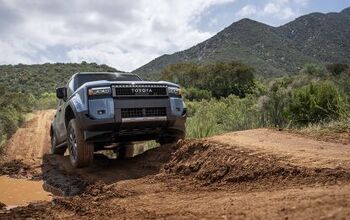

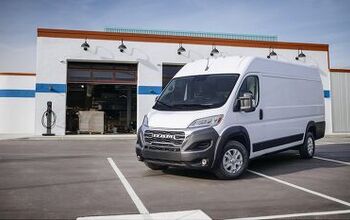

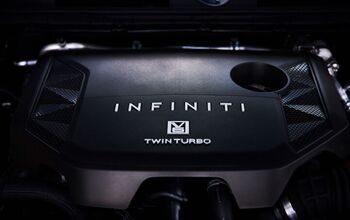


Comments
Join the conversation
Heading cross country this summer (N.Y. to California). Looking for the most fuel efficient tire for my trip. I have a separate winter tires on rims. Looking for strictly summer/ fuel efficient tires. My vehicle is a Chevy, Avalanche Z71, 2011. I have owned this since new. What tires do you recommend? Sincerely Joel S.